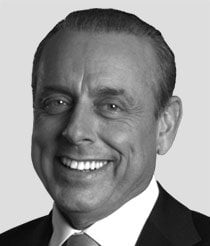Do you know Ally Financial Inc.?
You've no doubt seen their commercials. They used to be all over the tube hawking their high-yielding certificates of deposit. Now they're all over the tube with their "no hidden fees" campaign.
 I like the one where the woman is afraid to try new things because she's had bad experiences before. Her mechanical dog sparks a fire when he drinks water and her trainer hooks her up to electrodes that zap her. I like these commercials; they're funny.
I like the one where the woman is afraid to try new things because she's had bad experiences before. Her mechanical dog sparks a fire when he drinks water and her trainer hooks her up to electrodes that zap her. I like these commercials; they're funny.
But Ally isn't funny.
It recently announced that it's launching an initial public offering (IPO) of its stock at a price per share of $25 to $28. The shares will be offered by the U.S. Treasury as part of its planned exit of its investment in Ally during the subprime crisis in 2008.
I've heard some analysts say this could be a good deal for investors.
But I can't believe the U.S. government wants to unleash this on the public.
The Truth About Ally Financial
Ally was formerly GMAC (General Motors Acceptance Corporation), a finance unit of General Motors. They got stupid-greedy and got into subprime-mortgage lending instead of sticking to their auto-financing knitting.
GMAC looked clever for a while.
And all-too-clever Cerberus Capital Management (the giant hedge fund/private equity shop) bought a 51% interest in them in 2006. (Then Cerberus bought Chrysler. Not two of their better moves.)
GMAC imploded mostly because its subprime unit, Residential Capital LLC, sunk the company.
GMAC had to be rescued. The government bailed it out with $17.2 billion in TARP money. But it needed another $3 billion more (no one seems to remember that) in "liquidity" backstopping, which it got from the U.S. Federal Reserve after it begged to become a bank-holding company to feed at the Fed's free-money-for-failures trough.
Do you know what they did next, in a feeble attempt to give themselves a makeover and regain the public's trust?
They changed their name to the friendly-sounding Ally Financial (as in "I'm your ally") on May 15, 2009.
Then, with the government's backstop, Ally began to grow its deposit base. Investors weren't putting money into the company, which is why the government had to come in. But the weak bank was allowed to advertise for depositors.
They shilled for themselves, offering high-rate CDs. You know about high-rate CDs, right? They caused the S&L crisis. They are high-interest payments to depositors to lend the bank money, which it then lends out at higher rates for a profit.
Okay, if you have to pay high rates to get deposits into your bank, where are you going to find borrowers that are going to pay higher than market interest rates so your bank turns a profit?
Oh, that would be subprime all over again.
Only, this time Ally is playing the game with subprime auto loans.
Good for them. They've gone back to their auto-lending roots. Too bad that's potentially bad for you if you're dumb enough to invest in Ally when it goes public.
Most of Ally's loan book is auto loans. And most of those are probably subprime. We'll see how much of their book is autos and how much is subprime when we get a look at their S1 IPO filing documents.
In the meantime, Bloomberg reported that LTV, that's loan-to-value, for subprime autos rose from 112% in 2012 to 114.5% at the end of 2013. That means lenders are lending 14.5% more than the automobile being purchased and financed is worth!
Seriously? Why are lenders lending more than a car is worth? Is there some new math I don't know about that adds depreciation back onto the value of an asset that makes it worth more when you drive it out of the showroom? Or better yet, off the used car lot?
Exeter Finance, which was bought by Blackstone Group, recently said they're seeing an increase in late payments on up to 7.8% of outstanding loans, up from 5% in 2012.
And about GM, their auto dealers with the weakest finances owed them $12 million at the end of 2012. At the end of 2013 the amount those dealers owed GM had risen to $1.6 billion, according to Bloomberg.
So, now the U.S. government, which coddled GMAC, stroked it back to health, let it borrow from depositors at high rates to lend out at higher rates in order to make more money to pay it back and look profitable... wants to unleash it on the public?
That's going to be a winner, for sure.
And by the way, there are other short-selling opportunities about to float to the top of the "let's make money on this crap falling" game, as more subprime auto lenders are getting deeper and deeper into the swamp.
Next: Everyone's talking about Michael Lewis' new book "Flash Boys" and high-frequency trading, but here's the real reason the stock market is rigged...
About the Author
Shah Gilani boasts a financial pedigree unlike any other. He ran his first hedge fund in 1982 from his seat on the floor of the Chicago Board of Options Exchange. When options on the Standard & Poor's 100 began trading on March 11, 1983, Shah worked in "the pit" as a market maker.
The work he did laid the foundation for what would later become the VIX - to this day one of the most widely used indicators worldwide. After leaving Chicago to run the futures and options division of the British banking giant Lloyd's TSB, Shah moved up to Roosevelt & Cross Inc., an old-line New York boutique firm. There he originated and ran a packaged fixed-income trading desk, and established that company's "listed" and OTC trading desks.
Shah founded a second hedge fund in 1999, which he ran until 2003.
Shah's vast network of contacts includes the biggest players on Wall Street and in international finance. These contacts give him the real story - when others only get what the investment banks want them to see.
Today, as editor of Hyperdrive Portfolio, Shah presents his legion of subscribers with massive profit opportunities that result from paradigm shifts in the way we work, play, and live.
Shah is a frequent guest on CNBC, Forbes, and MarketWatch, and you can catch him every week on Fox Business's Varney & Co.



